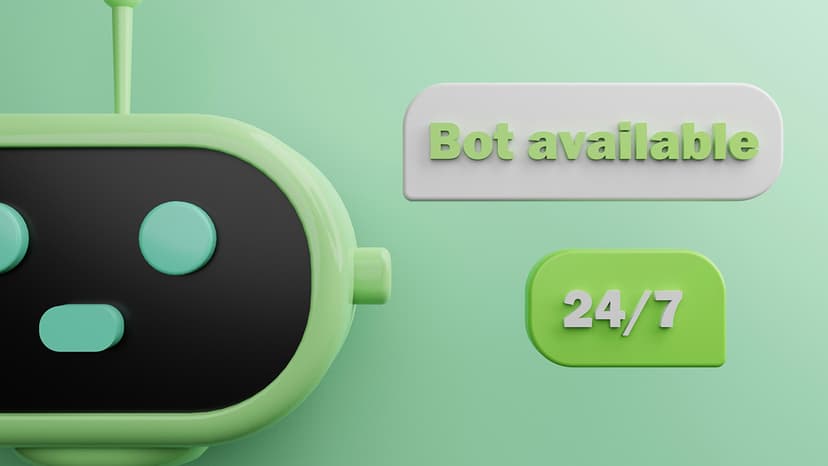Developing an Effective Chatbot Strategy: A Comprehensive Guide
Developing a successful chatbot strategy requires careful planning and consideration of various factors. In this blog post, we will explore key steps and best practices to create an effective chatbot strategy that aligns with your business goals and customer needs.
Step 1: Define Clear Objectives and Use Cases
Before diving into chatbot development, it is crucial to clearly define your objectives and identify specific use cases where a chatbot can add value. Whether it's streamlining customer support, driving sales conversions, or improving lead generation, understanding your desired outcomes will help shape the direction of your chatbot strategy.
Consider conducting a thorough analysis of your existing customer interactions to identify pain points and areas where a chatbot can provide meaningful assistance. This analysis will enable you to prioritize use cases and allocate resources effectively.
Step 2: Choose the Right Platform and Technology
Selecting the appropriate platform and technology is a critical decision that will impact the functionality, scalability, and performance of your chatbot. There are various options available, ranging from ready-to-use chatbot builders to custom-built solutions.
If you are looking for a quick and cost-effective solution, chatbot builders like Chatfuel or ManyChat provide user-friendly interfaces and pre-built templates to create chatbots without extensive coding knowledge. On the other hand, custom-built chatbots offer more flexibility and can be tailored to unique business requirements, but they require a skilled development team.
Consider factors such as integration capabilities, natural language processing (NLP) capabilities, and the ability to handle complex dialogues when selecting a platform or technology.
Step 3: Design Conversational Flows and User Experience
Creating a seamless and intuitive user experience is crucial for maximizing user engagement and satisfaction. Invest time in designing conversational flows that align with your brand voice and ensure a natural and interactive chatbot experience.
Start by mapping out potential user queries and crafting appropriate responses. Use decision trees or flowcharts to visualize the different paths a conversation can take and create fallback options for handling unexpected user inputs.
Consider incorporating personalized elements such as user profiling, context awareness, and recommendations to provide a more tailored experience. Additionally, ensure that your chatbot is capable of understanding and responding to common user intents and is equipped with effective error handling mechanisms.
Step 4: Implement Continuous Learning and Improvement
To ensure your chatbot remains effective and up to date, it is crucial to implement a continuous learning and improvement process. Monitor user interactions, collect feedback, and analyze chatbot performance metrics to identify areas for enhancement.
Leverage machine learning techniques and tools to train your chatbot on new datasets and improve its language understanding capabilities. Regularly update your chatbot's knowledge base to incorporate new product information, FAQs, and troubleshooting guides.
By continuously refining your chatbot's capabilities, you can deliver a more accurate and personalized user experience, leading to higher customer satisfaction and increased conversions.
Step 5: Test and Iterate
Thorough testing is essential to ensure that your chatbot performs as expected and meets the desired objectives. Conduct both functional and user experience testing to identify and rectify any issues or inconsistencies.
Engage a diverse group of users to participate in beta testing and collect their feedback to uncover potential usability issues and optimize the chatbot's performance. Iterate based on this feedback and refine your chatbot before launching it to a wider audience.
Step 6: Deploy and Monitor
Once you have thoroughly tested and refined your chatbot, it is time to deploy it and monitor its performance in real-world scenarios. Monitor key performance indicators (KPIs) such as user satisfaction, response time, and conversion rates to gauge the effectiveness of your chatbot strategy.
Regularly analyze user feedback and conduct surveys to gain insights into user perception and identify areas for improvement. Make necessary adjustments and updates to enhance the chatbot's capabilities and address any emerging user needs.
The implementation of a well-thought-out chatbot strategy can be a game-changer for businesses, revolutionizing customer interactions and driving operational efficiency. By defining clear objectives, selecting the right platform, designing optimal conversational flows, continuously learning and improving, and deploying and monitoring effectively, you can ensure the success of your chatbot initiative.
Remember, developing an effective chatbot strategy is an ongoing process that requires adaptation and refinement based on user feedback and changing business needs. Embrace the power of chatbots and leverage their potential to provide exceptional customer experiences and gain a competitive edge in today's digital landscape.












